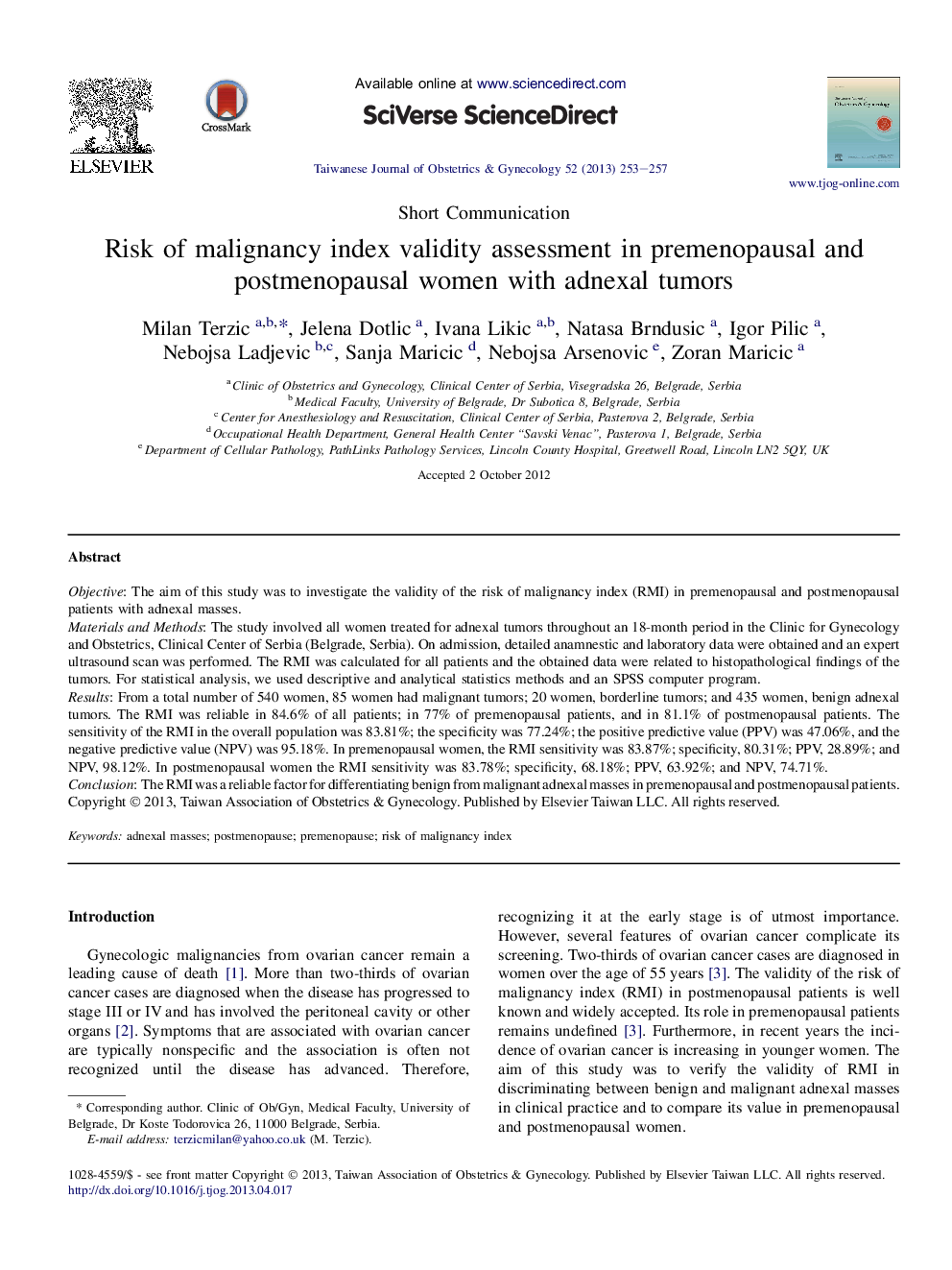| Article ID | Journal | Published Year | Pages | File Type |
|---|---|---|---|---|
| 3975512 | Taiwanese Journal of Obstetrics and Gynecology | 2013 | 5 Pages |
ObjectiveThe aim of this study was to investigate the validity of the risk of malignancy index (RMI) in premenopausal and postmenopausal patients with adnexal masses.Materials and MethodsThe study involved all women treated for adnexal tumors throughout an 18-month period in the Clinic for Gynecology and Obstetrics, Clinical Center of Serbia (Belgrade, Serbia). On admission, detailed anamnestic and laboratory data were obtained and an expert ultrasound scan was performed. The RMI was calculated for all patients and the obtained data were related to histopathological findings of the tumors. For statistical analysis, we used descriptive and analytical statistics methods and an SPSS computer program.ResultsFrom a total number of 540 women, 85 women had malignant tumors; 20 women, borderline tumors; and 435 women, benign adnexal tumors. The RMI was reliable in 84.6% of all patients; in 77% of premenopausal patients, and in 81.1% of postmenopausal patients. The sensitivity of the RMI in the overall population was 83.81%; the specificity was 77.24%; the positive predictive value (PPV) was 47.06%, and the negative predictive value (NPV) was 95.18%. In premenopausal women, the RMI sensitivity was 83.87%; specificity, 80.31%; PPV, 28.89%; and NPV, 98.12%. In postmenopausal women the RMI sensitivity was 83.78%; specificity, 68.18%; PPV, 63.92%; and NPV, 74.71%.ConclusionThe RMI was a reliable factor for differentiating benign from malignant adnexal masses in premenopausal and postmenopausal patients.
